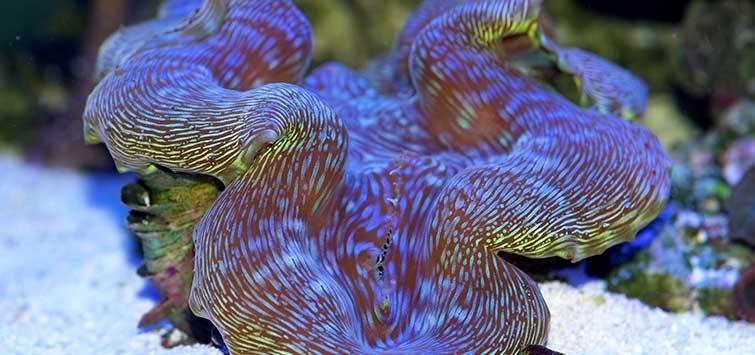Nassarius arcularius
Author: Bob Goemans
Common Names: Mud snail
Phylum: Mollusca
Class: Gastropoda
Order: Neogastropoda
Family: Nassariidae
Range: Tropical Indo-Pacific Ocean
Water Requirements: Calcium 380 to 430 ppm, alkalinity 3.5 meq/l, pH 8.1 to 8.2, specific gravity 1.024 to 1.026, and a temperature range of 74° to 83°F (23° to 28°C).
Natural Environment:Those that fall into this genus are generally found in shallow waters, oftentimes intertidal areas where mud and/or organics accumulate. Shell coloration is mostly off-white.
Captive Care
These snails are extremely good scavengers and usually reside buried in the sand, which they plow through like a snowplow going through a snowdrift, feeding upon detritus. They are somewhat small, 18 to 40 mm, and when the aquarium is fed, emerge from the sand and begin to cruise the aquarium looking for uneaten foodstuffs. As you can see in the photo, they have a large foot area that helps them quickly glide over substrates of various sizes and along a trunk-like projection called a "proboscis," which is similar to that of a direction finder to help locate uneaten meaty foods.
They are quite safe, as I've had them in my aquarium for almost a year and have never seen any living creatures harmed by their traveling over them. Unless you feed the aquarium, the chances are you'll rarely see them! But they are relentless workers, helping to reduce accumulating detritus in the sandbed and doing away with uneaten meaty foodstuffs.
Feeding
They also don't appear to need any special care or feeding, as they continue to traverse the sandbed until food enters the water. When that happens, they simply pop up from the sand and charge, with their proboscis waving wildly in the water towards any uneaten food that remains in the aquarium. It's fun to watch.
Water Quality
It's my understanding that these snails are not overly abundant in the trade, and what is seen mostly comes from the Philippines. Because they appear to be collected in shallow muddy pools or tidepools, it would seem logical that they are accustomed to salinities more in the range of 1.025 or slightly higher.
Therefore, I recommend keeping them at general reef aquarium specific gravity range of 1.024 to 1.026. Nevertheless, other water quality issues, such as excessive nitrate and phosphate levels, would not be an issue since they come from areas high in organics. And since they are accustomed to higher salinity levels, I recommend acclimating them carefully to your water conditions before adding them to your aquarium.

.png?h=595&iar=0&w=2781&hash=5FD5E69473BCC22199FBFA2FB71B6033)



